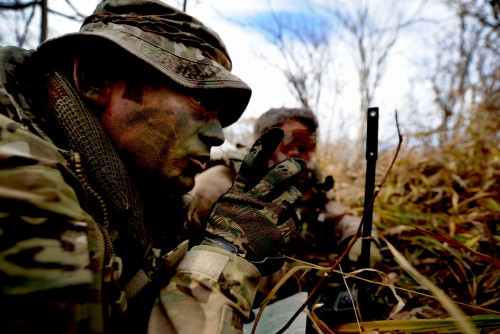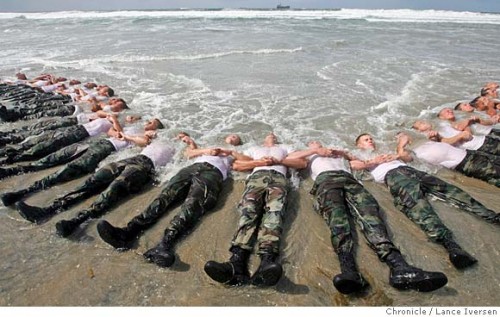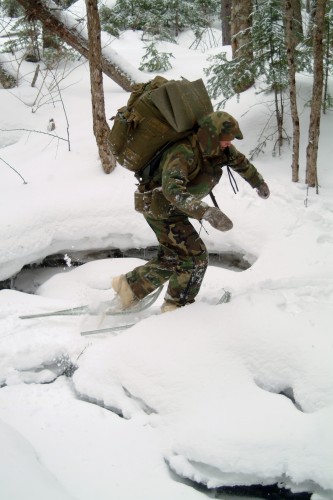
In the summer of 1998, at the International War Crimes Tribunal in The Hague, a Bosnian-Croatian solider was tried for the torture, inhumane treatment, and rape of a Muslim woman. During the trial, the defendant’s lawyers stated that the woman, the primary witness in the trial, had been diagnosed with posttraumatic stress disorder (PTSD) and that her memories were thus not dependable. For instance, shortly after the attack in 1995, the woman claimed that the defendant was, “172 centimeters tall. He was thin, small-featured, and had short, blond hair.” However, at the trial in 1998, the woman described the defendant as a “rather thin young man” with a “rather strong jaw or teeth” and “chestnut to black hair […] cut short and combed up.” Furthermore, there were events she described in the 1998 trial that did not match statements she gave in 1995 or recounts of other witnesses.
The Misinformation Effect
What happened between 1995 and 1998 to the woman that made her give such a different account of the events? How could her abuser’s hair, height, and build transform so dramatically in that three-year interim? During the trial, Dr. Charles Morgan, an Associate Clinical Professor of Psychiatry at the Yale School of Medicine, argued that high levels of stress can cause damage to regions of the brain critical for memory. He further voiced his hesitation to rely solely upon the memory of a PTSD sufferer, stating, “I would want independent corroborating evidence of some sort.” At the time, famous studies by American psychologist Dr. Elizabeth Loftus had already demonstrated the misinformation effect: the idea that past memories can be impaired through exposure to misleading information. However, it was still unclear just how soon or to what extent memories could be altered through misinformation.
While much is still unknown about the misinformation phenomenon, progress has been made in uncovering the factors that make misinformation particularly effective. One of the latest discoveries came from the laboratory of Professor Morgan, the same Professor of Psychiatry that was present at the International War Crimes Tribunal in The Hague. In January 2013, Professor Morgan published a study in the International Journal of Law and Psychiatry that involved over 850 active military personnel who underwent survival school training. Participants in this training program were placed into a mock prisoner-of-war (POW) camp, where they were interrogated and exposed to various forms of propaganda. These elite soldiers were expected to learn how to resist the power of suggestion or subliminal messaging and maintain an accurate representation of the proceeding events, so that they could report this information back to command following the experience. If these soldiers were truly capable of ignoring persuasion, they would have been able to avoid the misinformation effect better than the average American, especially under conditions of extreme stress.

The Changing Memories of Soldiers
In the study, Professor Morgan exposed some of the soldiers undergoing the POW camp experience to misinformation in the form of a questionnaire, photograph, or video. After exposure, the participants were asked to identify their interrogator from a lineup. For the misinformation-questionnaire group, participants took a survey that contained leading questions, such as, “Describe the weapon worn by your interrogator” as opposed to the neutral item, “Did your interrogator carry or have a weapon? If so, please describe it.” Those in the misinformation-photo group were exposed to a photograph of a Caucasian male (different from their actual interrogator), and the participants were told to look at the photograph while answering a series of questions about their experience. Finally, those in the misinformation-video group were exposed to a video containing misinformation. For instance, some of the videos showed the survival school staff carrying automatic weapons, when in reality none of the staff carried such weapons. A final, control group of participants was not exposed to misinformation and simply completed a survey describing the physical features of their interrogator.

The results of this study show a staggering trend. Of the participants shown an image following their interrogation, over 90 percent misidentified their interrogator when later shown a lineup, with 84 percent of participants mistaking the man in the photograph as their interrogator. When exposed to leading questions through a questionnaire, 27 percent falsely identified their interrogators as having a weapon, and 85 percent of participants falsely identified their interrogators as having a uniform. Finally, over 50 percent of participants exposed to a video showing familiar staff carrying weapons were likely to falsely recall that staff members had carried weapons in their real experience.

Significance and Future Areas of Research
Professor Morgan thus successfully, and with some ease, implanted false memories into some of America’s most elite military personnel. While other studies have shown similar results with the misinformation effect, this was the first study to demonstrate that false memory-inducing techniques can alter recently experienced events as well as remote experiences from years back. Furthermore, the effect was shown in a portion of the population that is specifically trained to resist such influences.
While this study did not investigate the biological reasons for the malleability of memories, Professor Morgan has a hypothesis based on his other studies of the body’s response to stress which involves the chemical Neuropeptide Y (NPY). “We do know from studying guys at survival school that the elite troops, the special forces guys, release much more [NPY] under stress and come right back to their baseline after stress,” says Dr. Morgan. If NPY plays a role in dealing with distress, it may also play a role in the alteration of memories formed during a stressful experience. At this point, however, such biological studies are purely speculative considering the difficulties of studying the misinformation effect in non-human subjects.

The Consequences of Malleable Memories
While it is disturbing to think of human memory as inaccurate or subject to change, the study by Professor Morgan is only one of a growing number of studies that support this claim. From eyewitness testimony of POW camps, it is critical that people are taught not only to resist the influences of misinformation but also to avoid intentionally or unintentionally exploiting the effect through leading questions, photographs, or video. While eyewitness testimony can be powerful and convincing, it must be considered with a realistic view of the limitations of the human mind.
In the case of the 1998 trial at The Hague, the defendant party’s claims that the eyewitness’ memories were inaccurate proved ineffectual. The defendant was sentenced to ten years in prison for his role in the rape of the woman. Even if the woman’s memories were not totally accurate, she may one day benefit from the fact that memories are not static. As Professor Morgan puts it, “I think that from the psychiatry perspective the fact that memory, even for high stress events, is malleable is actually quite a positive thing because it means that there is hope that memories can shift slightly over time, perhaps becoming less painful to people, perhaps by seeing the world in a new light.” In other words, it may be malleable memories that help people like the woman from Bosnia to build new lives.

About the Author: Lara Boyle is a Branford senior majoring in Biology with a focus in Neurobiology. She works in Glenn Schafe’s neuroscience lab, where she investigates the effects of chronic stress on gene expression, synapse regulation, and epigenetic mechanisms in the lateral amygdala.
Acknowledgements: The author would like to thank Professor Charles Morgan for his time and engaging presentation of his research.
